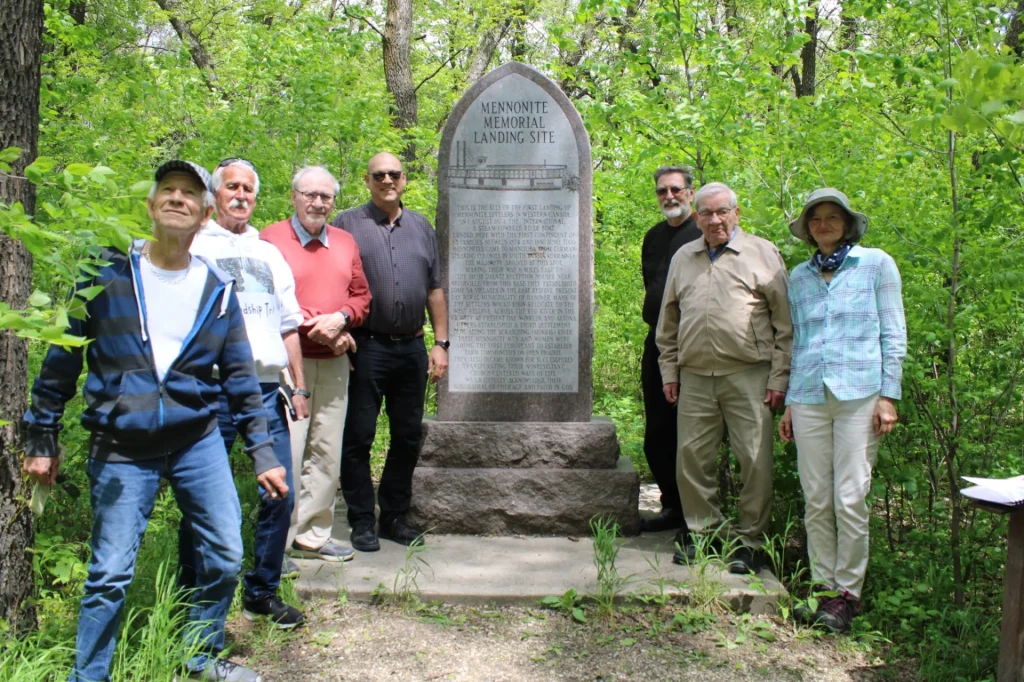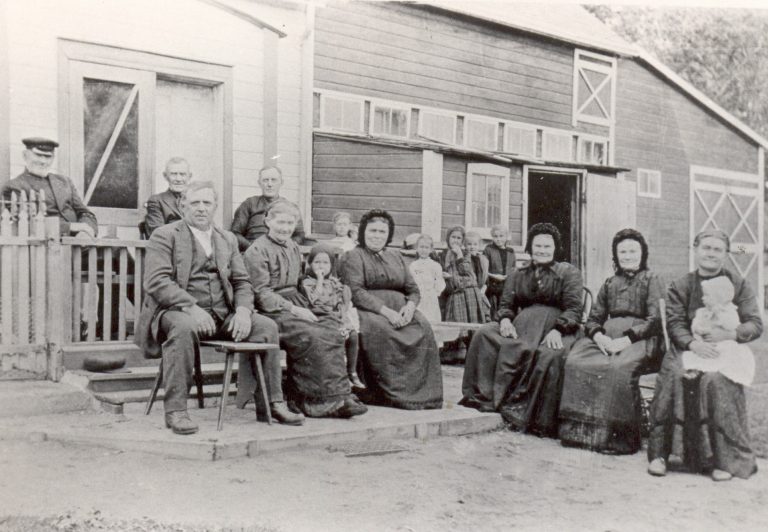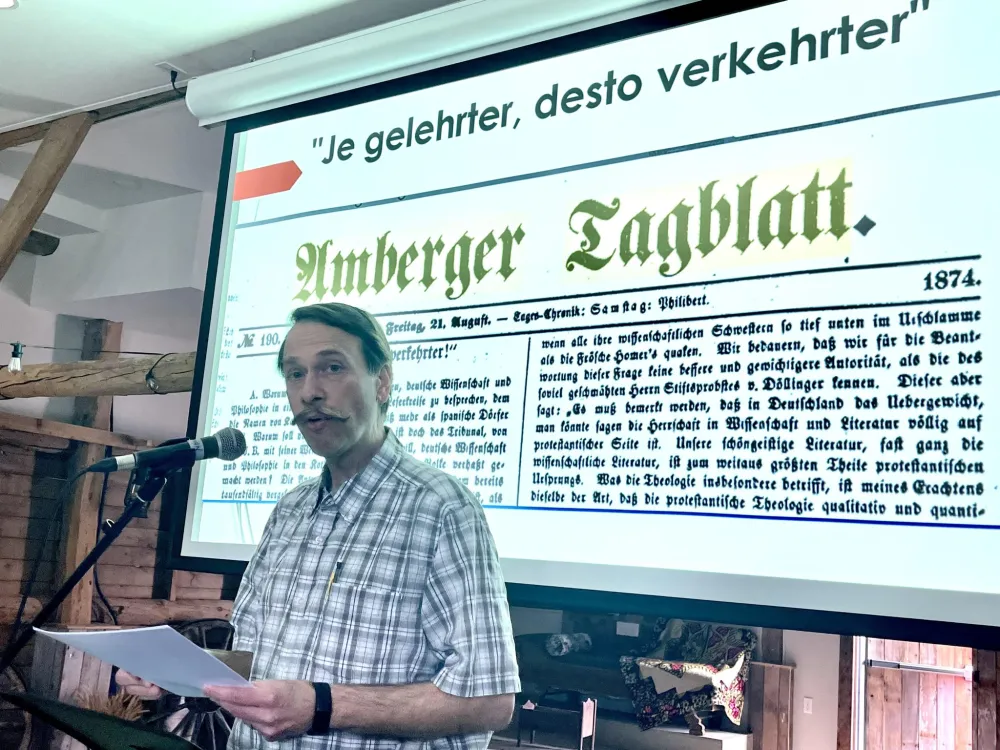Lori Penner, The Carillon, May 15, 2023 The Manitoba Mennonite Historical Society (MMHS) Annual General Meeting (AGM) drew a large crowd of members and visitors to the historic Commons Barn in Neubergthal on April 29. Since it was founded in 1958, MMHS has continued to foster an understanding of and respect for the history and beliefs of the Mennonite people in the past and present, and to challenge them to give new expression to this heritage in the future. The MMHS works with communities to promote historical research and publications, search out and preserve historical sites and Mennonite cemeteries. They also organize lectures and provide resources for school and organizations and encourage the expression of the Mennonite experience in various areas, such as literature, drama, history, fine arts, music, geography, sociology, and religion. They also work in cooperation with various Mennonite archives and museums, to collect, preserve, and exhibit articles and documents of historical value, and interpret and promote the religious convictions of the Anabaptist-Mennonite people, past and present. Members and standing committees come from across the province. MMHS President Conrad Stoesz reflected on 2022 and how things are becoming busier as they move out of pandemic restrictions and have finally been able to resume many of their activities. This included the unveiling of a plaque near Niverville, which marks the buildings that Jakob Schantz built to house the Mennonite pioneers for the first few weeks as they prepared to build new communities east of the Red River. Their society magazine, Heritage Posting, under the guidance of Glen Klassen, continues to thrive, and this was the first time in several years that MMHA representatives were able to attend national meetings in Saskatchewan. Stoesz noted a number of important anniversaries in their communities. “This past year marked the 100th anniversary of the move of 7,000 Mennonites to Mexico because of heavy handed assimilation policies of the provincial government in Manitoba and Saskatchewan. MMHS members were active in helping Mennonite Heritage Village, MHSC, and the Plett Foundation bring to fruition traveling exhibits to mark the anniversary.” That exhibit is on display at the MHC Gallery in Winnipeg and will spend the next two years traveling through Ontario and Western Canada. Stoesz also noted that next year is the 150th anniversary of Mennonites in Manitoba, 2025 is the 500th anniversary of the Anabaptist Movement, and 2026 the 100th anniversary of Mennonites in Paraguay. The MMHS is encouraging congregations, conferences, families, and communities to consider marking Manitoba Mennonite 150th, through special services, reunions, publications, websites, dramas, or possibly a cairn or plaque. “Commemorating anniversaries and important events within a community is crucial in preserving and understanding the shared history and values that shape its identity,” he said. “It provides an opportunity for community members to come together, reflect on the past, and consider a legacy they wish to leave for future generations. It also helps to keep the memory of key moments and individuals alive, which can be a source of inspiration and pride.” Stoesz said that the ongoing war in Ukraine is a reminder of the importance of the work they do in their historical societies, archives, libraries, museums, and institutes. As part of Russia’s effort to reclaim Ukraine, he fears that cultural sites such as libraries, museums and archives will be targeted. “This war is not only about land and resources, but it is also about the past and who gets to define it.” He told the audience that despite challenges such as lack of volunteers, increased costs and reduced income, the work that the MMHS does is essential to the communities they serve. “Let’s remember that we’re not just collecting dusty books, torn documents, or broken furniture, but we are helping our communities to define their identity – our identity.” Stoesz also acted as keynote speaker at the AGM, transporting guests back 130 years as he revisited the split of the West Reserve Bergthal in Manitoba, and the formation of the Bergthaler and Sommerfelder churches in the 1890s. Based on his extensive research, he brought events and personalities that shaped this pivotal time in Manitoba Mennonite history to life. The AGM also included a viewing of the movie, Conform: The Mennonite Migration to Mexico. The thought-provoking documentary explores the challenges Mennonites faced in Canada and their journey to Mexico after World War One. Director Andrew Wall fielded questions from the audience, to gain a deeper insight into this important story. “The idea for the film started in 2019. It took about a year to put together, do all the interviews and the re-enactments. It’s a complicated sort of nuanced story, based on the research that’s been done, and from the archives. We just try to tell the story of how it was.” Wall has produced and directed several other award-winning films about the Mennonite experience through Refuge 31 Films. Conform: The Mennonite Migration to Mexico gleaned a Best Documentary Feature award at the 2023 Winnipeg Real to Reel Film Festival. “This is a story that needs to be told and shouldn’t be forgotten. It was a complicated story, and I think both sides didn’t really know what they were getting into. There was a portion of the communities who moved away because of the school issue, but the other half remained and adjusted and moved on. Their viewpoints were all valid and their perspective was worth remembering and looking at.”


